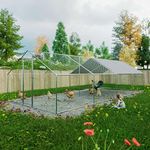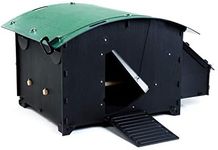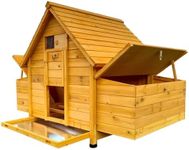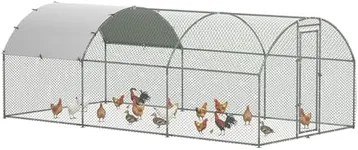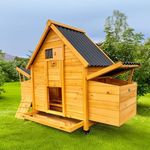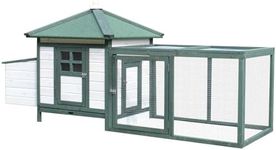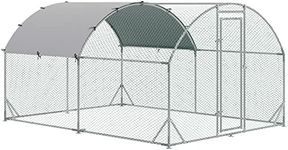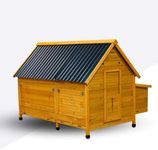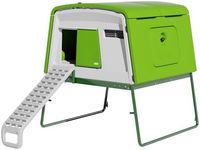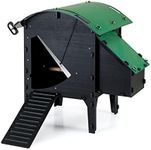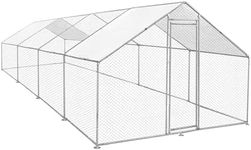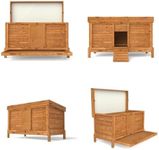Buying Guide for the Best Chicken Coops
Choosing the right chicken coop is essential for the health and happiness of your chickens. A well-designed coop provides shelter, security, and comfort, ensuring your chickens are safe from predators and harsh weather conditions. When selecting a chicken coop, consider the number of chickens you plan to keep, the space available in your yard, and the climate in your area. It's important to balance functionality with ease of maintenance, as a coop that is difficult to clean or access can lead to health issues for your flock. Here are some key specifications to consider when choosing a chicken coop.Size and CapacityThe size and capacity of a chicken coop refer to how many chickens it can comfortably house. This is important because overcrowding can lead to stress, disease, and aggressive behavior among chickens. Coops are generally categorized by the number of chickens they can accommodate, such as small (up to 4 chickens), medium (5-8 chickens), and large (9 or more chickens). To choose the right size, consider the number of chickens you plan to keep and ensure each bird has at least 3-4 square feet of space inside the coop and 8-10 square feet in the run.
MaterialChicken coops are typically made from wood, plastic, or metal. The material affects the coop's durability, insulation, and maintenance needs. Wooden coops are popular for their natural insulation and aesthetic appeal but require regular maintenance to prevent rot and pest infestations. Plastic coops are easy to clean and resistant to pests but may not provide as much insulation in extreme temperatures. Metal coops are durable and secure but can become too hot or cold depending on the weather. Choose a material based on your climate, maintenance preference, and aesthetic considerations.
VentilationVentilation in a chicken coop is crucial for maintaining air quality and preventing respiratory issues in chickens. Proper ventilation helps remove moisture, ammonia, and heat from the coop. Coops with adjustable vents or windows allow you to control airflow based on the weather. In warmer climates, more ventilation is needed to keep chickens cool, while in colder climates, you need to balance ventilation with insulation to keep the coop warm. Consider your local climate and ensure the coop has adequate ventilation options to keep your chickens healthy.
Predator ProtectionPredator protection refers to the coop's ability to keep chickens safe from animals like foxes, raccoons, and hawks. This is important because predators can cause significant harm to your flock. Look for coops with sturdy construction, secure locks, and reinforced wire mesh. Elevated coops or those with a solid floor can also help prevent predators from digging underneath. Consider the types of predators common in your area and choose a coop with features that provide the best protection for your chickens.
Ease of CleaningEase of cleaning is a key factor in maintaining a healthy environment for your chickens. A coop that is difficult to clean can lead to the buildup of waste and bacteria, increasing the risk of disease. Look for coops with removable trays, large doors, or hinged roofs that allow easy access for cleaning. Consider how often you are willing to clean the coop and choose a design that makes this task as simple as possible. A clean coop is essential for the well-being of your chickens.
Nesting Boxes and Roosting BarsNesting boxes and roosting bars are essential features of a chicken coop, providing spaces for chickens to lay eggs and rest. Nesting boxes should be comfortable and private, with one box for every 3-4 hens. Roosting bars allow chickens to perch off the ground, which is their natural behavior for sleeping. The number and arrangement of these features depend on the size of your flock. Ensure the coop has enough nesting boxes and roosting space to accommodate all your chickens comfortably.
